Last week I looked at the biggest problems facing each Top 25 team. Now I'm in a more positive frame of mind.
Today, I want to consider teams and players that could look much better than they did last season. Get in on all these ground floors while you can and you'll look smart come March.
ACC
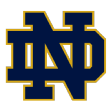
Team: Notre Dame Fighting Irish
It's been a quiet couple of years for the Fighting Irish, but this season the men from South Bend project to make a run at an NCAA tournament bid. Bear in mind this team's problem last season was that it was drop-dead awful at making shots, marking the first time in at least a decade when that sequence of words could be written about a Mike Brey offense. Those numbers may well correct toward normalcy this season, however, with all five starters from ND's 2019 ACC tournament rotation plus a healthy Robby Carmody returning.
To be sure, the league office did Brey no favors by handing him a nine-day sequence in which the Irish will play at Clemson, at Virginia, at Duke and at home against North Carolina. So, no, Notre Dame won't win the ACC, but the Irish have a shot at leaping from 3-15 in conference play one year to dancing the next. Not bad.

Player: Xavier Johnson, Pittsburgh Panthers
Even as a 6-foot-3 freshman for a 14-19 team, Johnson recorded an excellent assist rate, made a decent number of 3s and played solid D. This season as the lead creator in a stronger rotation, Johnson may well improve on all of the above while also addressing his issues finishing at the rim.
Big 12

Team: Texas Longhorns
Amaze your Big 12 friends: Texas actually had the league's No. 2 offense in conference play last season, and all it got the Longhorns was a 16-16 regular-season record overall and an awkward "It's not us, it's you" text from the men's basketball committee on Selection Sunday.
Just to be showily versatile, the Horns then marched to an NIT title thanks in part to really good defense (particularly against Colorado in Austin and TCU at Madison Square Garden). Now Shaka Smart brings back four starters from that NIT run (Jericho Sims replaced Jaxson Hayes in the lineup after the latter missed the "other" postseason due to injury), while adding three top-100 freshmen and a rather renowned defensive wizard in the person of associate head coach Luke Yaklich.

Player: Derek Culver, West Virginia Mountaineers
Culver was given a big role in the West Virginia offense as a 6-foot-10 freshman last season, yet he made a mere 45% of his 2s against Big 12 opponents. Something's wrong with that picture, and it turns out Culver took a ton of 2-point jumpers and was even less efficient than the rest of Division I at what is already an intrinsically low-efficiency endeavor. Coach Bob Huggins will get that situation squared away in short order.
Big East
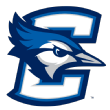
Team: Creighton Bluejays
Last season, Greg McDermott's men had the same conference record, 9-9, as an NCAA tournament team such as Seton Hall (not to mention NIT teams such as Georgetown and Xavier), but, on a possession-by-possession basis, it was actually the Bluejays who were the class of this all-.500 group.
No, this isn't last season's team. Martin Krampelj elected to play professionally in Slovenia, and reserves Kaleb Joseph and Connor Cashaw graduated. Still, everyone else is back, up to and including Ty-Shon Alexander, Mitch Ballock, Davion Mintz and Marcus Zegarowski. The Bluejays will be seen as making a jump if they make the tournament, and it's possible a straight repeat of last season's per-possession performance will do the trick. Over the past three seasons, 11 of the 12 Big East teams that outscored their opponents in conference play went dancing. The lone exception was, yes, Creighton in 2019.

Player: Mac McClung, Georgetown Hoyas
As a freshman, McClung shot 80% at the line while attempting nearly five 3s per contest. Those two numbers suggest the young man will be a good perimeter shooter in the not-too-distant future, last season's 28% mark from beyond the arc notwithstanding. Besides, even the 28% has a story: McClung began his college career just 9-of-45 from distance. After he came back from an ankle injury in January, however, the lad was, relatively speaking, on fire.
Big Ten
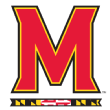
Team: Maryland Terrapins
Sure, Maryland made the tournament last season, and the Terrapins even earned a pretty nice (No. 6) seed. That's not the typical profile of the teams being forecast for a jump here, granted. The thing with the Terps, though, is that significant improvement is just sitting there right in front of them. All Mark Turgeon's guys have to do to is achieve parity in turnovers with respect to their opponents. Even achieving something close to parity could be sufficient.
Everything else is, apparently, in place. Anthony Cowan and Jalen Smith were named preseason All-Big Ten. Maryland's nucleus shows, on paper, the ability to hit 3s, play defense and crash the glass at both ends of the floor. All this group requires is what it so rarely managed to pull off last year, getting as many chances to score as the opponent earns. There have been few teams for whom traditional X's and O's videos of half-court possessions ending in shots were less illuminating than they were for the 2018-19 version of Maryland.
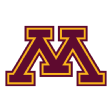
Player: Daniel Oturu, Minnesota Golden Gophers
Six-foot-10 Oturu was one of the best rebounders in the Big Ten at both ends of the court as a freshman, and he offered Gophers fans encouraging glimpses of both rim defense and offense in the paint. Not to mention he was already being given a fair number of possessions on a 2018-19 team with established scorers such as Jordan Murphy and Amir Coffey. Both of those veterans are gone (and Eric Curry's health is in question), so Oturu could be in line for a significant increase in minutes and workload.
Pac-12
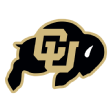
Team: Colorado Buffaloes
Tad Boyle's men give us the near-perfect case of breakout performance about to happen. Basically, Colorado was better than most people realized last season (i.e., better than what you saw when the Buffaloes were losing to Indiana State and Hawaii), and now everyone, in effect, is back. Of course, there are no guarantees in this fortune-telling business, and the present writer even thought Virginia would beat UMBC in the 2018 round of 64. So, take the following with a grain of salt:
CU managed to post the Pac-12's third best per-possession scoring margin despite shooting a miserable 31% on its 3s last season. Tyler Bey is a monster on the defensive glass, and his double-double of 22 points and 16 rebounds in a losing cause against Washington in the Pac-12 tournament may well have been a preview of coming attractions in Boulder. Nor is it out of the question that McKinley Wright IV could end the season as the league's top point guard. The Buffs should be tough.

Player: CJ Elleby, Washington State Cougars
Perhaps Elleby won't live up to the 41% 3-point shooting (43% in Pac-12 play) he recorded as a freshman, but there's also a good chance he can do better than 45% inside the arc this season. Be that as it may, there's a lot to like with a nominal wing who's 6-6 and able to post both his team's second-best assist rate and its best defensive rebound percentage. While it's true the Cougars aren't likely to push for a league title this season, you'll want to keep an eye on Elleby just the same.
SEC
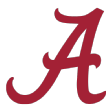
Team: Alabama Crimson Tide
New coach Nate Oats arrives in Tuscaloosa to find three returning starters waiting for him: Kira Lewis, John Petty and Herbert Jones. In addition, the Crimson Tide will also have West Virginia transfer James Bolden available. Bolden had an excellent year coming off the bench as a sophomore for the Mountaineers in 2017-18 and began last season as the starter in Morgantown before parting ways with Bob Huggins.
Meanwhile, Alabama is still waiting to hear on the eligibility of Villanova transfer Jahvon Quinerly. Either way, Oats will have a fair amount of talent on hand considering he's taking the reins at an SEC program that's made just two NCAA tournaments in the past 13 years. There's also the fact that Alabama made regular appearances last March in ESPN.com's highly esteemed and uncommonly well-written Bubble Watch right up until Selection Sunday. The Tide were not that far off the mark.
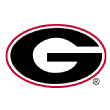
Player: Rayshaun Hammonds, Georgia Bulldogs
Hammonds might have a tough time getting anyone to notice him in Athens now that projected 2020 No. 2 pick Anthony Edwards is in uniform for the Bulldogs. Then again, the 6-8 junior is pretty important to the Dawgs' near future in his own right. Hammonds requires only minutes to be one of the SEC's top performers, and those minutes will hinge, in turn, on health and foul trouble. If he can stay on the floor, Tom Crean's veteran will be a vital cog in a machine known for and featuring Edwards.
American
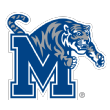
Team: Memphis Tigers
Picking the Tigers here might not be a terribly surprising or adventurous choice. So be it. When a program misses the NCAA tournament for five consecutive years and then brings in the nation's No. 1 recruiting class the next season, said team is indeed poised to make a big jump. We don't usually see this scenario, but Penny Hardaway has brought it to life.
Never mind wondering how good a team that relies primarily on freshmen can be, the question is just how good these freshmen of Hardaway's will be. Obviously, Duke earned a No. 1 seed this past March playing four freshmen, so, yes, the ceiling is high. The early reports on James Wiseman are, likewise, adulatory in the extreme. On the other hand, the results achieved by freshman-intensive rosters outside the Duke-Kentucky duopoly have tended to be more commonplace. Where on said spectrum will this Memphis team land? Even a season in the middle of these two poles would constitute a big jump for the program.

Player: Jeriah Horne, Tulsa Golden Hurricane
Behold, the ultimate pick for a big jump: Horne is about to begin his junior season, and he has made precisely one start in his career thus far. If he does get in an occasional game, however, all indications are that the 6-7 reserve can justify the august honor tendered him here. The one-time Nebraska Cornhusker is a career 79% shooter at the line who makes his 2s, exhibits perimeter range and cleans up on the defensive glass. Show him the love, coach Frank Haith!
Mid-Majors

Team: Harvard Crimson
Harvard hasn't been to the NCAA tournament since 2015, but that's likely to change this season. Everyone is back, more or less, for Tommy Amaker, and bear in mind this group was up by a point on Yale at halftime of the Ivy tournament title game (after tying the Bulldogs at 10-4 during regular-season conference play).
There are few players in the country not named Markus Howard who can draw fouls the way Bryce Aiken does, and the senior will again team with classmates Chris Lewis, Christian Juzang and Justin Bassey as well as sophomore Noah Kirkwood. Granted, the Crimson will have to do something about their catastrophic turnover rate, but even an average performance in that category might be enough to propel Harvard back to the field of 68.

Player: Carlik Jones, Radford Highlanders
Jones recorded a big increase in his assist rate last season as a sophomore, and the point guard led the Highlanders all the way to the Big South title game before they fell to Gardner-Webb. This season, Jones could well see the same kind of jump in his 3-point accuracy. His shooting at the line (career 76%) suggests that better results beyond the arc await. Not to mention that, at a listed height of 6-1, Jones even helps out on the defensive glass. He's lined up for a big junior year.
